Abstract
Background:
This study aims to report clinical outcome and long term graft and patient survival rate of one thousand kidney transplantation. We analyzed risk factors that impact on graft survival in the 1,000 case of kidney transplantation through this study.
Methods:
We have performed 1,000 cases of kidney transplantation in Samsung Medical Center, Seoul, Korea from February 1995 to January 2008. We retrospectively reviewed medical record of recipients and donors.
Results:
The mean follow up period was 69 months. Composition of type of donor was living donor, 653 cases and deceased donor, 347 cases. Type of donor source was mostly living-related type. 94 cases had graft failure. Major cause of graft failure was chronic allograft nephropathy. And major viral infection was cytomegalovirus infection. Major non-viral infection was urinary tract infection. 47 cases of immediate post operative complication was diagnosed as lymphocele. Overall 10-year graft survival rate was 83.9% respectively. 10-year patient survival rate was 95.7% respectively. 10-year graft survival and patient survival of recipient were significantly different between living donation group and deceased donation group.
Go to : 
REFERENCES
1). Kim JY, Kim SH, Kim YS, Choi BS, Kim JC, Park SC, et al. Report of 1,500 Kidney Transplants at the Catholic University of Korea. J Korean Soc Transplant. 2006; 20:172–80.
2). Sirinivas TR, Meier-Kriesche HU. Minimizing immuno-suppression, an alternative approach to reducing side effects: objectives and interim result. Clin J Am Soc Nephrol. 2008; 3(S2):S101–16.
3). Ekberg H, Tedesco-Silva H, Demirbas A, Vítko S, Nashan B, Gürkan A, et al. ELITE- Symphony Study. Reduced exposure to calcineurin inhibitors in renal transplantation. N Engl J Med. 2007; 375:2562–75.
4). Taber DJ, Weimert NA, Henderson F, Lin A, Bratton CF, Chavin KD, et al. Long-term efficacy of induction therapy with anti-interleukin-2 receptor antibodies or thymoglobulin compared with no induction therapy in renal transplantation. Transplant Proc. 2008; 40:3401–7.

5). Korean Network for Organ Sharing(KONOS). KONOS annual report, 2008 [Internet] Seoul: KONOS, 2009. Available from. http://www.konos.go.kr.
6). Meng HL, Jin XB, Li XT, Wang HW, Lü JJ. Impact of human leukocyte antigen matching and recipients’ panel reactive antibodies on two-year outcome in presensitized renal allograft recipients. Chin Med J(Engl). 2009; 122:420–6.
7). Süsal C, Opelz G. Kidney graft failure and presensitiza-tion against HLA class I and class II antigens. Transplantation. 2002; 73:1269–73.
8). El-Zoghby ZM, Stegall MD, Lager DJ, Kremers WK, Amer H, Gloor JM, et al. Identifying specific causes of kidney allograft loss. Am J Transplant. 2009; 9:527–35.

9). Sagedal S, Hartmann A, Rollag H. The impact of early cytomegalovirus infection and disease in renal transplant recipients. Clin Microbiol Infect. 2005; 11:518–30.

10). Bonvoisin C, Weekers L, Xhiqnesse P, Grosch S, Milicevic M, Krzesinski JM. Polyomavirus in renal transplantation: a hot problem. Transplantation. 2008; 85(S):S42–8.

11). Trofe J, Hirsch HH, Ramos E. Polyomavirus-associated nephropathy: upate of clinical management in kidney transplant patients. Transpl Infect Dis. 2006; 8:76–85.
Go to : 
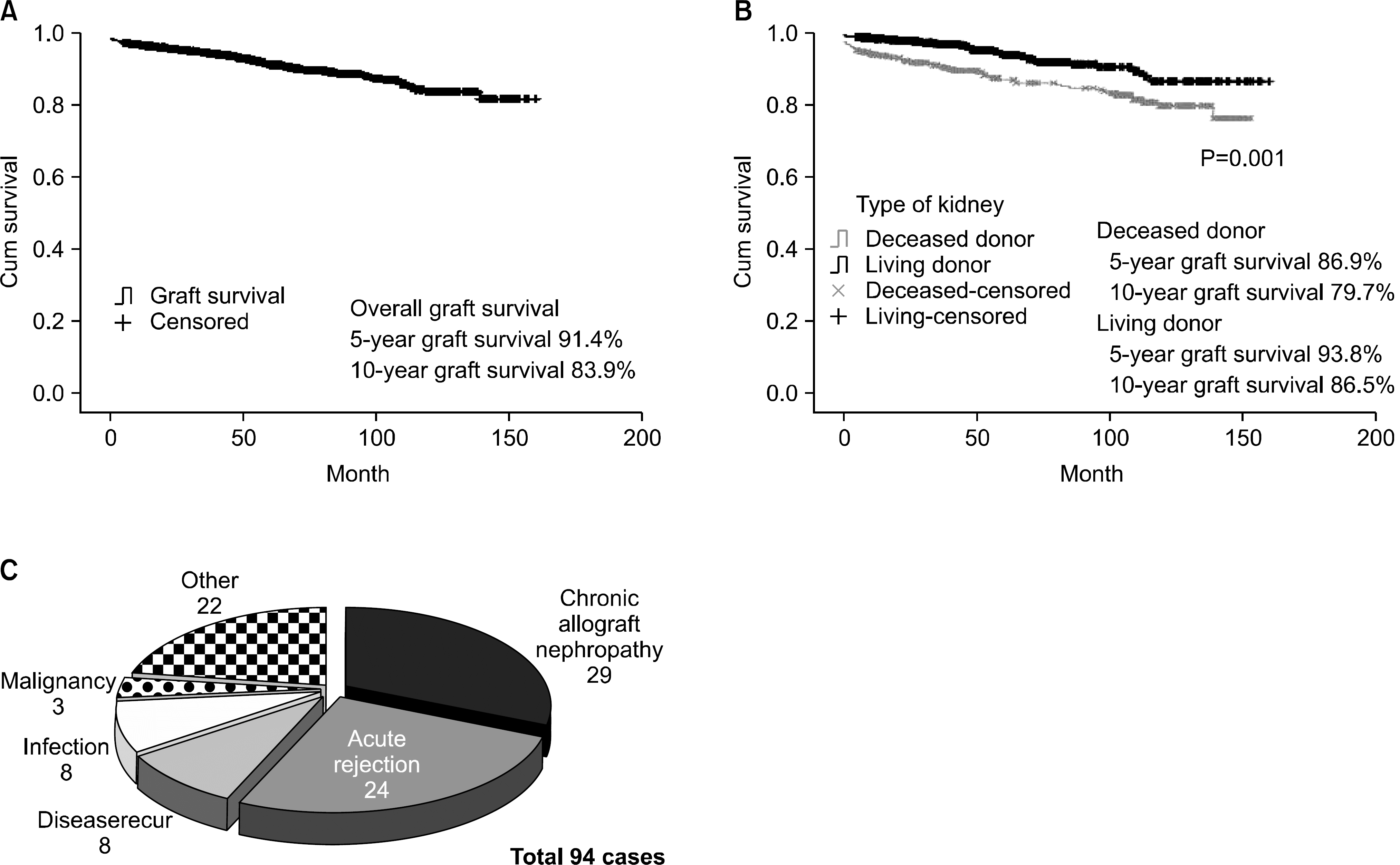 | Fig. 4.(A) Overall graft survival, (B) Graft survival according to type of donor, (C) Causes of graft failure. |
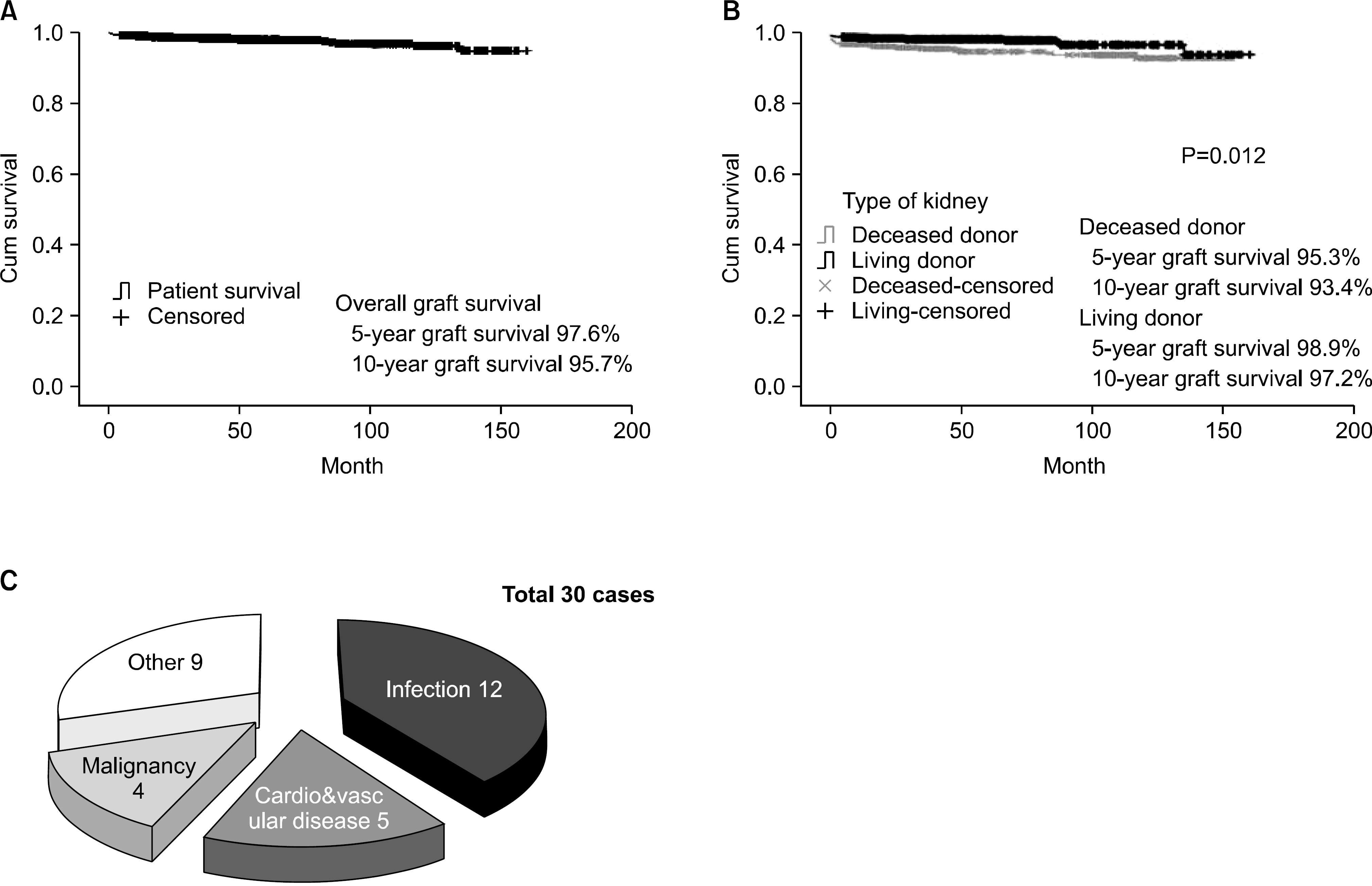 | Fig. 5.(A) Overall patient survival, (B) Patients survival according to type of donor, (C) Causes of patient death. |
Table 1.
Basic characteristics of 1,000 case of kidney transplantation
Table 2.
Number of patients according to immunosuppressive agent
| Immunosuppresive agent | |||
|---|---|---|---|
| Induction | Maintain | ||
| ATG induction | 164 | CsA + AZA + PD | 179 |
| OKT3 induction | 10 | CNI (CsA or TAC) + MMF + PD | 802 |
| Anti IL2 receptor | 40 | mTOR inhibitor + PD | 7 |
| antibody | |||
Table 3.
Complication, infection, and malignancy after kidney transplantation
Table 4.
Cox proportional hazard model of graft survival




 PDF
PDF ePub
ePub Citation
Citation Print
Print


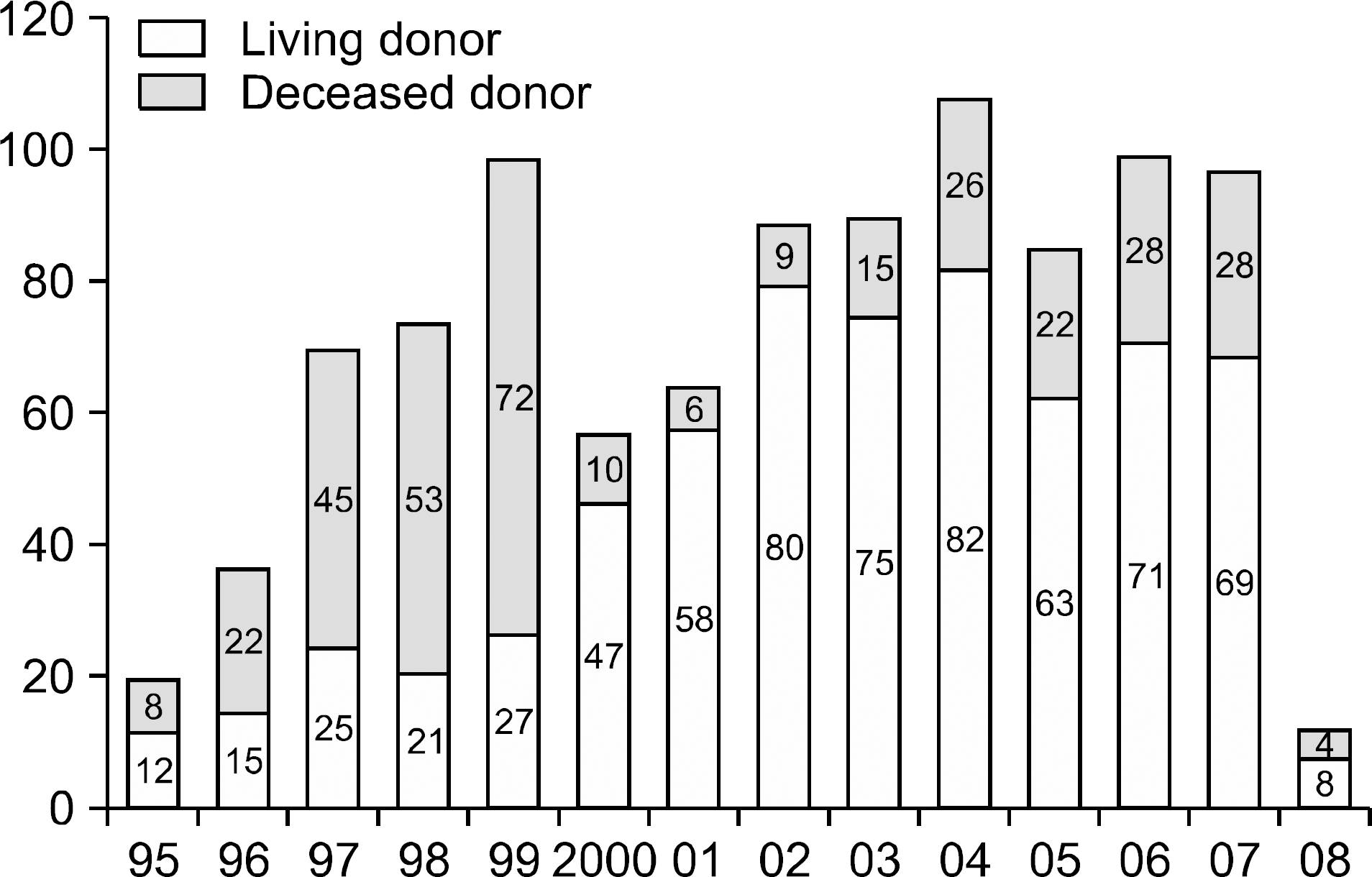
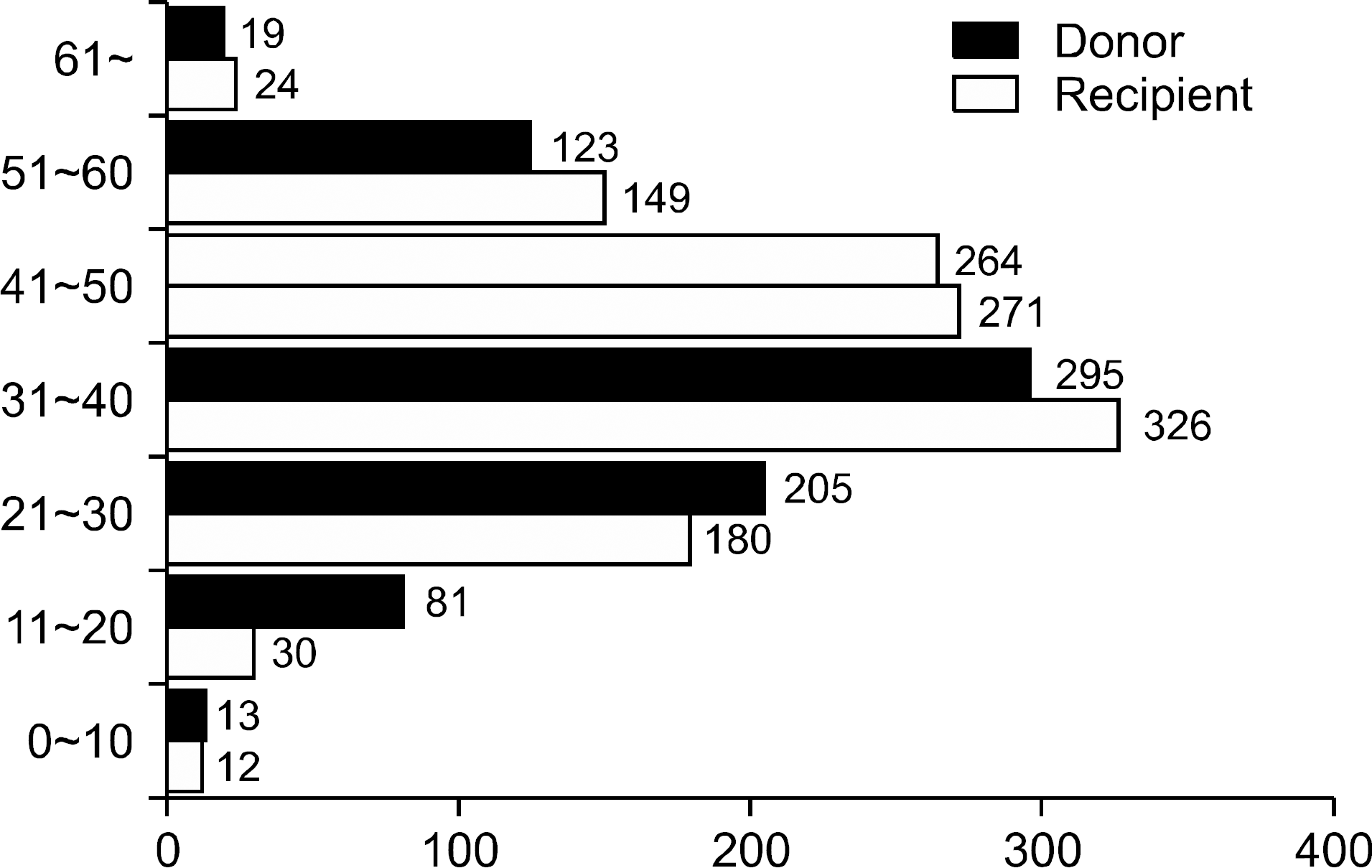
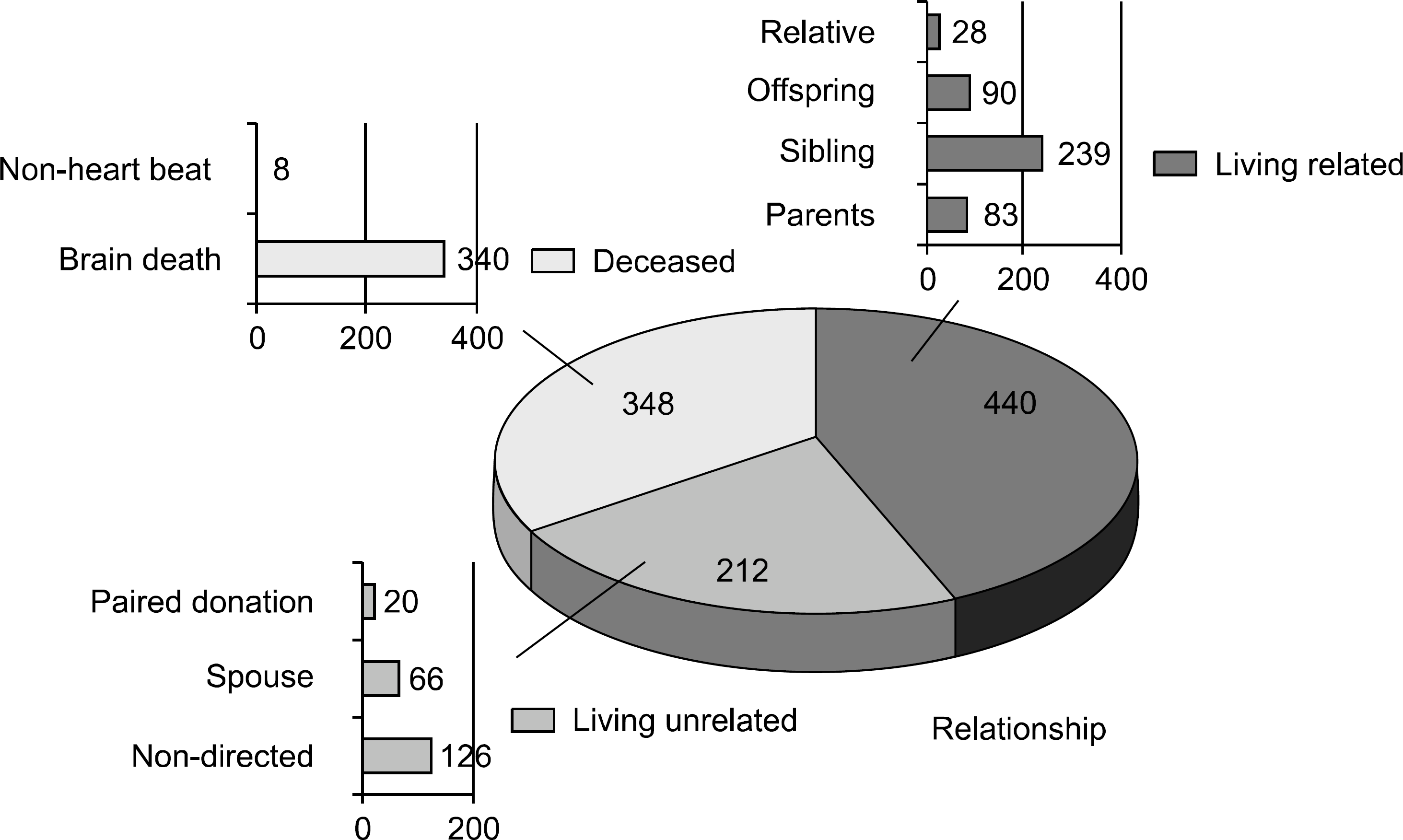
 XML Download
XML Download